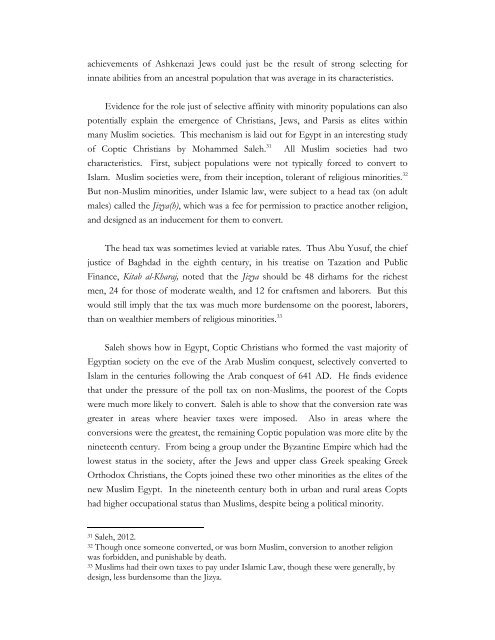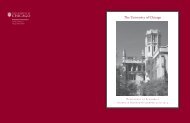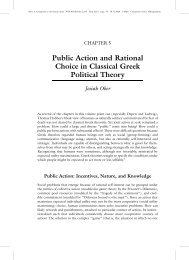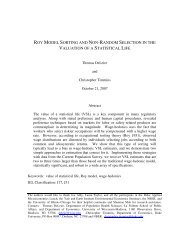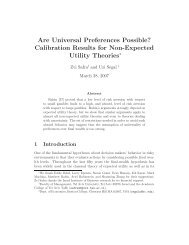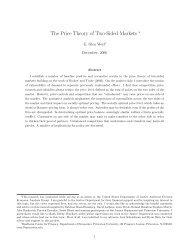Surnames and a Theory of Social Mobility - University of Chicago ...
Surnames and a Theory of Social Mobility - University of Chicago ...
Surnames and a Theory of Social Mobility - University of Chicago ...
Create successful ePaper yourself
Turn your PDF publications into a flip-book with our unique Google optimized e-Paper software.
achievements <strong>of</strong> Ashkenazi Jews could just be the result <strong>of</strong> strong selecting for<br />
innate abilities from an ancestral population that was average in its characteristics.<br />
Evidence for the role just <strong>of</strong> selective affinity with minority populations can also<br />
potentially explain the emergence <strong>of</strong> Christians, Jews, <strong>and</strong> Parsis as elites within<br />
many Muslim societies. This mechanism is laid out for Egypt in an interesting study<br />
<strong>of</strong> Coptic Christians by Mohammed Saleh. 31 All Muslim societies had two<br />
characteristics. First, subject populations were not typically forced to convert to<br />
Islam. Muslim societies were, from their inception, tolerant <strong>of</strong> religious minorities. 32<br />
But non-Muslim minorities, under Islamic law, were subject to a head tax (on adult<br />
males) called the Jizya(h), which was a fee for permission to practice another religion,<br />
<strong>and</strong> designed as an inducement for them to convert.<br />
The head tax was sometimes levied at variable rates. Thus Abu Yusuf, the chief<br />
justice <strong>of</strong> Baghdad in the eighth century, in his treatise on Tazation <strong>and</strong> Public<br />
Finance, Kitab al-Kharaj, noted that the Jizya should be 48 dirhams for the richest<br />
men, 24 for those <strong>of</strong> moderate wealth, <strong>and</strong> 12 for craftsmen <strong>and</strong> laborers. But this<br />
would still imply that the tax was much more burdensome on the poorest, laborers,<br />
than on wealthier members <strong>of</strong> religious minorities. 33<br />
Saleh shows how in Egypt, Coptic Christians who formed the vast majority <strong>of</strong><br />
Egyptian society on the eve <strong>of</strong> the Arab Muslim conquest, selectively converted to<br />
Islam in the centuries following the Arab conquest <strong>of</strong> 641 AD. He finds evidence<br />
that under the pressure <strong>of</strong> the poll tax on non-Muslims, the poorest <strong>of</strong> the Copts<br />
were much more likely to convert. Saleh is able to show that the conversion rate was<br />
greater in areas where heavier taxes were imposed. Also in areas where the<br />
conversions were the greatest, the remaining Coptic population was more elite by the<br />
nineteenth century. From being a group under the Byzantine Empire which had the<br />
lowest status in the society, after the Jews <strong>and</strong> upper class Greek speaking Greek<br />
Orthodox Christians, the Copts joined these two other minorities as the elites <strong>of</strong> the<br />
new Muslim Egypt. In the nineteenth century both in urban <strong>and</strong> rural areas Copts<br />
had higher occupational status than Muslims, despite being a political minority.<br />
31 Saleh, 2012.<br />
32 Though once someone converted, or was born Muslim, conversion to another religion<br />
was forbidden, <strong>and</strong> punishable by death.<br />
33 Muslims had their own taxes to pay under Islamic Law, though these were generally, by<br />
design, less burdensome than the Jizya.


